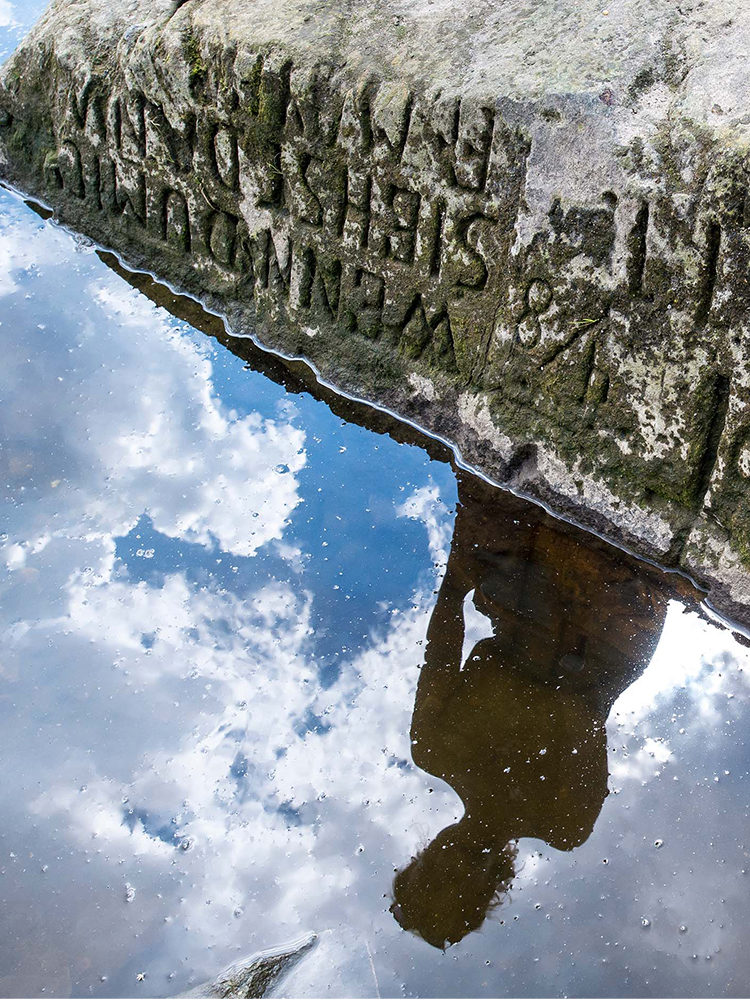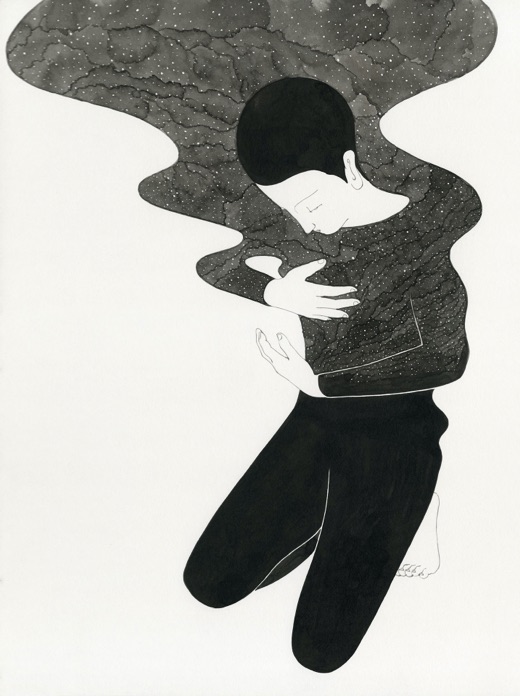
Cristina de Middel / Magnum Photos
The Water of Life
Llewellyn Vaughan-Lee is a Sufi teacher who has specialized in dreamwork and Jungian psychology. He is the author of numerous books on Sufism and spiritual responsibility in our present time of transition, including For Love of the Real and Seasons of the Sacred, and editor of the anthology Spiritual Ecology: The Cry of the Earth. His most recent book is Seeding the Future: A Deep Ecology of Consciousness.
In a landscape where nothing is certain and old patterns of control tighten their grip, Llewellyn Vaughan-Lee urges us to leave behind that which no longer nourishes us and work with the Earth toward a living future.
It was said that Carl Jung’s favorite story was about the water of life:
The water of life, wishing to make itself known on the face of the earth, bubbled up in an artesian well and flowed without effort or limit. People came to drink of the magic water and were nourished by it, since it was so clean and pure and invigorating. But humankind was not content to leave things in this Edenic state. Gradually they began to fence the well, charge admission, claim ownership of the property around it, make elaborate laws as to who could come to the well, put locks on the gates. Soon the well was the property of the powerful and the elite. The water was angry and offended; it stopped flowing and began to bubble up in another place. The people who owned the property around the first well were so engrossed in their power systems and ownership that they did not notice that the water had vanished. They continued selling the nonexistent water, and few people noticed that the true power was gone. But some dissatisfied people searched with great courage and found the new artesian well. Soon that well was under the control of the property owners, and the same fate overtook it. The spring took itself to yet another place—and this has been going on throughout recorded history.1
Each time the water of life moves, bubbling forth into a new landscape, at first no one notices. Water still flows from the old spring for a time, and people are unaware that it has become just ordinary water that lacks the power of the water of life. It is still bottled and sold by those businesses and organizations that have grown up around the spring. Today the old water has been so well marketed that most continue to regard it as if it were still the water of life—as if the meaning of life still lay in the pursuit of material well-being, which we have invested so much of our attention, our energy, and resources in. Those who sell it have much to gain from that collective conviction and have become very clever at manipulating the dreams and fantasies of society so that no one recognizes it for the illusion it is. We’ve been made “consumers” of the old water so it can continue to be sold.
But because this water no longer carries the real energy of life, everything the spring had nourished around it will gradually die. This is a natural cycle, and one could decide not to interfere with it. One could just wait for it to play out, just watch until it reappears in a new way in a new place. This is how it has always happened through humanity’s long evolution, and we too could just follow the deeper rhythms of life, gradually withdraw our energy from the old ways, discover the new spring and take our attention there. But it could take many, many generations for this cycle to complete itself, for the energy to be withdrawn from the present civilization. And the water that is being sold has become so increasingly toxic that it now poses a danger to the whole Earth: our seas full of plastic, monocultures contributing to biodiversity loss, heatwaves increasing, ice shelves melting, fires, floods, and famine. And the marketing strategies of corporations increasingly manipulate us to keep us addicted to this dying dream.
At this moment in our human journey the spring has moved to a new location. The old patterns of ownership and control are still in place, and only a small, though increasing, minority notice that this water no longer nourishes and has instead become deadly toxic. The values that support our contemporary civilization benefit a small elite, who have no concern for humanity’s general well-being, or especially the well-being of the Earth. However, young people are waking up to the poison of the present dream, crying out with real awareness of what is happening, speaking truth to power as they sense their future being stolen by the few. In their fight for climate justice, they recognize how the world’s poorest and lowest-carbon-emitting countries are suffering the most from climate change.
The patriarchal, hierarchical power structures still appear to dominate. They are visible in authoritarian regimes that control and oppress, that don’t allow freedom or truth. They have also taken on new identities, embraced new technologies, become online and social media giants—modern global robber barons. Their currency is often our personal data, which they ruthlessly mine and exploit. Their pollution is less visible than the fossil fuel corporations, but they do not support or sustain new growth. Instead, one can recognize that a certain humanity is absent—the dark side of technology, of algorithms and endless data.
The water of life is already flowing from a new spring—magical, healing—and we are still in the shopping malls and online stores of the old era. The period between the withdrawal of the healing water from the old hillside and its reemergence as a life-giving source in its new location is often a dark age for humanity, a time in which there is little light to help human beings to live. One thinks of the Dark Ages, the era that followed the decline of the Roman Empire in Europe, when the light of civilization seemed lost, and the constant warfare and brutality of local lords dominated the land. But this new spring is already present, its light is alive. It is speaking to us, trying to get our attention. This is where laughter and joy and love are present, even amidst the ruins that are around us.
In this time of transition, in this landscape where nothing is certain, how can we help the water of life nourish a new way of being, one that supports the more-than-human world to which we belong? What are the stories that can help us to emerge from the present growing wasteland into a living landscape? This transition will be a time of co-creation, working together with the Earth and with each other. There cannot be hierarchies in this work because that is not the model for the future. Instead, there will be different communities, different threads, each finding their own way to work for a living future in cooperation. There will be many patterns of experimentation, many “seed nurseries” discovering what is best for the changing climate and explorations of different forms of social and economic structures, ways to live and work together. Though there will also be core values that are in tune with this unfolding—oneness, love for each other and for the Earth, and a return to the sacred nature of creation.
Once long ago we walked in a simpler world where the song of creation could be heard. Our consciousness held a magical awareness of the land and its inhabitants, and the names of creation sang in the wind. We cannot return to that elemental time, both humanity and the Earth have changed too much over the millennia. But we can learn to listen, to be attentive, to watch the seasons and the soul. We can begin to remember why we are here and trust a destiny deeper and more enduring than our possessions, than what can so easily be lost in a fire or a flood. I do not think that we will lose all of our technology in the coming years, but we will learn to live more simply. The harsh days of fire and floods will teach us either despair or respect, the Earth can be both cruel and kind.
The stories we need for a living future will return our consciousness to the land, a fully animate world which we mostly abandoned centuries ago. There is a primal need to find a pathway back to this landscape, experienced through our senses and our dreams. These stories are both simple and radical. Simple because they describe what is already around us—the wind in the trees, the rise and fall of the tides. Radical because they point to a fundamentally different quality of consciousness, which belongs to both our distant past and our possible future. Here the water of life flows freely, unpolluted, and is life giving.
Trusting the wisdom of the Earth, its patterns of interconnection as well as its magic and sacred meaning, we can reconnect with what is most essential as we lay the foundations for a new way of being with each other and the Earth. Recognizing that our present way of life is over, we can avoid being caught in the toxicity of its thought forms and patterns of behavior and turn our attention to the new spring bubbling up through the ground. We can recognize how we are a part of life recreating itself, finding new patterns of connection, new ways of being, no longer alienated from the land and each other.
This op-ed is published in conjunction with the launch of a new podcast series by Llewellyn Vaughan-Lee exploring the theme of “Stories for a Living Future.” You can listen to it here and wherever podcasts are found.
- Robert A. Johnson, Owning Your Own Shadow: Understanding the Dark Side of the Psyche (New York: HarperOne, 1991), vii–viii.







